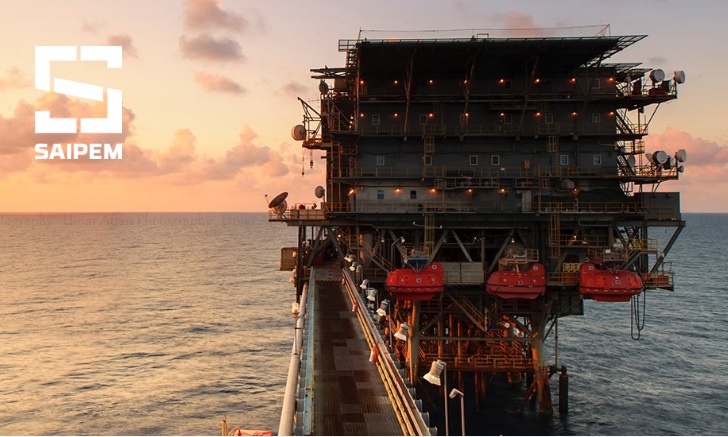Saipem is organized in three Business Units: Offshore, Onshore and Drilling, with a strong bias towards oil & gas related activities in remote areas and deepwater. Saipem is a leader in the provision of engineering, procurement, project management and construction services with distinctive capabilities in the design and the execution of large scale offshore and onshore projects and technological competencies such as gas monetization and heavy oil exploitation.
C H A L L E N G E
International oil and gas contracting services requires investment in many types of large industrial equipment such as vessels, cranes, slings and shackles, drilling rigs, drill pipes, and more.
This equipment is transported and used in locations around the world, and keeping track of it manually is prohibitively time-consuming. In this industry, time is money, and locating equipment quickly is critical for a project’s success. Saipem’s first challenge was to automate location tracking of all its assets.
The second challenge for Saipem was finding a way to track assets that provided the highest level of safety for its employees. Huge oil pipes stacked in a facility, for example, present a safety hazard if personnel have to climb onto the equipment to find an identification tag. For this reason, Saipem was interested in the use RFID, which can be read at distances of 2 meters or more without direct line of sight between the tag and the reader. Passive RFID was selected over active RFID to eliminate the ongoing need for battery replacement.
While there are many different kinds of assets in Saipem’s asset base, they have one thing in common: steel. In addition, offshore drilling locations are dominated by another source of RFID interference: large quantities of salt water. Saipem’s third challenge was finding a passive RFID solution that worked successfully in an environment with so much metal and liquid.
S O L U T I O N
ATEX-compliant HID EXO RAIN® RFID tags provided a solution for Saipem which met all of their requirements.
With a standard read range of 8 meters or more and a 2m read range with hand palm PC readers, these tags could be read successfully even in offshore applications. HID and ACM-e then worked with Saipem to install the asset tagging system across a number of bases as a pilot. Using RFID in offshore applications is a new frontier, and HID has partnered with Saipem to understand the needs and challenges of this application and help to create a successful RFID system. The new system has exceeded initial expectations, delivering the expected benefits and more.
R E S U L T
With this system, Saipem can accurately track the location of valuable assets, saving time and money and also improving control of certificates for better insurance reporting purposes. Perhaps more importantly, Saipem’s asset tracking system protects the health and safety of operators with remote identification of assets.
HID RFID tags offer Saipem numerous advantages:
• HID RFID tags work on metal, plastic, or a combination of the two. Saipem tags items like floaters and buoys in addition to the vessels, cranes, pipes, and drilling equipment originally planned. Using one tag for all equipment
types saves the company money and time.
• When a piece of equipment is found without a tag, operators can easily find the asset in the database, program a new tag with the correct ID number, and attach it to the asset. Other systems would have required waiting for a new ID tag to be issued, and welding equipment to attach the tag. HID tags are a much easier solution for tag attachment.
• HID tags have tested successfully in challenging environmental conditions. Saipem’s bases around the globe can vary from –60°C to +80°C, and tags must work in all these conditions.
• HID tags have successfully been tested on large pipe stacks, a key component of future drilling projects, and can be used to monitor pipes using RFID from production until completion of the pipelaying operations.
By using HID tags, Saipem maintains its lead in technology and efficiency in the oil and gas industry. Saipem plans to expand its RFID system to all its locations across the globe over the next few years. The new system exceeded initial expectations and delivered additional benefits.
Because the tags work on metal and plastic, Saipem is able to tag items like floaters and buoys in addition to the large industrial equipment. Operators are also able to program and attach new ID tags on the spot. Tagging large pipe stacks, another key component of drilling projects, allows Saipem to monitor their use from production through completion of pipe-laying operations.
A B O U T A C M – E S R L
Based in Milan, ACM-e operates in all parts of Italy as technical-engineering and managerial advisor in the field of maintenance engineering, logistics and other operations processes of business. ACM-e develops innovative technological solutions, in its own areas of expertise, focusing on plant and equipment, infrastructure of large Italian and international companies. Furthermore, ACM-e as system integrator proposes and carries out technological Automatic Data Collection (ADC) solutions.


Hi, this is a comment.
To get started with moderating, editing, and deleting comments, please visit the Comments screen in the dashboard.
Commenter avatars come from Gravatar.